Today Current Affairs: 29th June 2021 for UPSC IAS exams, State PSC exams, SSC CGL, State SSC, RRB, Railways, Banking Exam & IBPS, etc
Table of Contents
Exercise Sea Breeze:
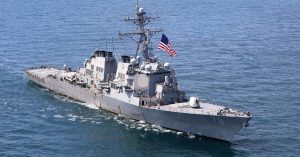
Ukraine and the United States launched joint naval Exercise ‘Sea Breeze’ in the Black Sea in a show of Western cooperation with Ukraine as it faces off with Russia.
- The drills come just days after the British Royal Navy’s HMS Defender passed near Russian-annexed Crimea in the Black Sea.
- The exercise Sea Breeze has been held since 1997, involving NATO states and their allies in the Black Sea region.
- It has taken place 21 times since 1997. This edition (2021) will be the largest In Exercise’s history that will involve some 5,000 military personnel from more than 30 countries.
- The drill is aimed at improving naval and land operations and improving cooperation among participating counties.
- The exercise is also aimed at sending a powerful message to maintain stability and peace in the region.
Baihetan Dam: World’s Second Biggest Hydropower Dam:

China has put into operation the Baihetan Dam, world’s Second Biggest Hydropower Dam.
- The Three Gorges Dam is the largest hydropower dam in the world and is also along China’s Yangtze River.
- It began operations in 2003.
- It is on the Jinsha River, a tributary of the Yangtze (the longest river in Asia).
- It has been built with a total installed capacity of 16,000 megawatts.
- It will eventually be able to generate enough electricity each day once to meet the power needs of 5,00,000 people for an entire year.
- It is part of Chinese efforts to curb surging fossil fuel demand by building more hydropower capacity.
- This comes at a time when dams have fallen out of favor in other countries due to environmental complaints (such as flooding farmland and disruption of the ecology of rivers, threatening fish and other species).
- China’s pledge in 2020 to reach carbon neutrality by 2060 had also added urgency to the construction.
World’s 100 Best Medical Colleges For The Year 2021:
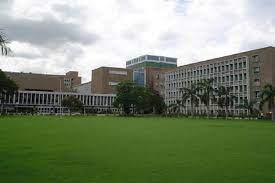
Six medical colleges from India have found a place in the list of the World’s 100 best medical colleges for the year 2021, in a ranking released by CEO World Magazine.
- The All India Institute of Medical Sciences (AIIMS) in Delhi has bagged 23rd position, while AFMC Pune has bagged 34th rank, followed by CMC Vellore (49), JIPMER Pondicherry (59), Medical College Chennai (64), and IMS BHU Varanasi (72).
- The US-based Johns Hopkins University School of Medicine ranked first with the highest score of 99.06, followed by Harvard Medical School, Perelman School of Medicine, and NYU Grossman School of Medicine.
Relief Package : Corona:
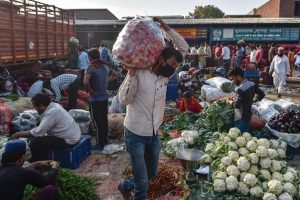
Union Finance Minister announced a slew of measures to provide relief to diverse sectors affected by the 2nd wave of COVID-19 pandemic.
- She announced a relief package of Rs 6,28,993 crore to support Indian economy in fight against COVID-19 pandemic. A total of 17 measures amounting to Rs. 6,28,993 crore were announced.
- These included two measures announced earlier, i.e. the additional Subsidy for DAP & P&K fertilizers, and extension of Pradhan Mantri Garib Kalyan Anna Yojana (PMGKAY) from May to November, 2021.
- She announced Rs. 1.1 lakh crore Loan Guarantee Scheme for COVID affected sectors. Of them Rs. 50 thousand crore will be for health sector. The scheme is aimed at upscaling medical infrastructure targetting unreserved areas.
- She also announced Rs. 1.5 lakh crore for Emergency Credit Line Guarantee Scheme, ECLGS which was launched as part of Atmanirbhar Bharat Package in May, 2020.
- She announced Creadit Guarantee Scheme which is a new scheme to facilitate loans to 25 lakh people through Micro Finance Institutions, MFI.
- The guarantee will be provided to Scheduled Commercial Banks for loans to new or existing NBFC- MFIs for on lending upto Rs. 1.25 lakh to about 25 lakh to small borrowers.
Agni-P (Prime):
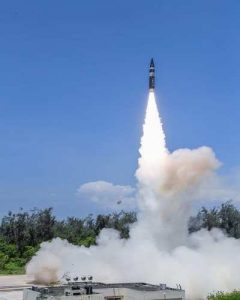
A new-generation nuclear-capable ballistic missile, Agni-P (Prime) was successfully test-fired by the Defence Research and Development Organisation (DRDO) from the Dr. A.P.J. Abdul Kalam island, Balasore, off the coast of Odisha.
- The ‘Agni Prime’ is the advanced version of the ‘Agni-1’ missile.
- The ‘Agni Prime’ is a short-range ballistic missile that will have a range of 1000 km to 1500 km and will have advanced features in agility and road mobility. It is a surface to a surface missile that can carry a payload of around 1,000 Kg or a nuclear warhead.
- The double stage missile will be lighter and much sleeker than its predecessor ‘Agni-1’.
- It is a canisterised missile. Canisterisation of missiles reduces the time required to launch the missile while improving its storage and mobility.
- The Agni class of missiles are the mainstay of India’s nuclear launch capability which also includes the Prithvi short-range ballistic missiles, submarine-launched ballistic missiles and fighter aircraft.
Submarine missiles:
- In the past few years, India has also operationalised its submarine-based nuclear launch capability, completing the nuclear triad.
- The DRDO, in January 2020, successfully test-fired a 3,500-km range submarine-launched ballistic missile, K-4, from a submerged pontoon off the Visakhapatnam coast.
- Once inducted, these missiles will be the mainstay of the Arihant class of indigenous ballistic missile nuclear submarines (SSBN) and will give India the stand-off capability to launch nuclear weapons submerged in Indian waters.
- INS Arihant, the only SSBN in service, is armed with K-15 missiles with a range of 750 km.
Rock Phosphate, The Key Raw Material Of DAP And NPK Fertilisers.:
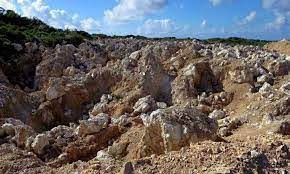
In order to improve the availability of phosphatic fertilisers (DAP and NPK) and to reduce the dependence on imports, Minister of State for Chemicals and Fertilisers chaired a meeting. Government ready with Action Plan to make India Aatmanirbhar in Rock Phosphate, the key raw material of DAP and NPK Fertlisers.
- Rock phosphates or phosphorites are sedimentary phosphatic deposits comprising fine-grained mixture of various calcium phosphates, most important being hydroxylapatite, carbonateapatite, fluorapatite and their solid solutions.
- About 80% phosphate production in the world is derived from phosphate rocks (phosphorite)
- Rock Phosphate is the key raw material for DAP and NPK fertilisers and India is 90% dependent on imports.
- Of the total reserves/resources, 34% are in Jharkhand, 31% in Rajasthan, 19% in Madhya Pradesh, 8% in Uttar Pradesh & Uttarakhand each , respectively. Meagre quantities of resources are also located in Gujarat and Meghalaya.
PV Narasimha Rao:

The Prime Minister, Shri Narendra Modi has paid tributes to former Prime Minister, Shri PV Narasimha Rao Ji on his 100th birth anniversary.
- Pamulaparthi Venkata Narasimha Rao (1921 –2004) was a politician who served as the 9th Prime Minister of India from 1991 to 1996. He also became the Chief minister of Andhra Pradesh in 1971.
- Father of Economic reforms: He sought to dismantle the License Raj system, reduce red tape and make Indian industries more competitive.
- He laid the foundation for trade liberalization and re-integration of Indian economy with the global economy, especially East Asian economies.
- Foreign policy: Among his bold moves in foreign policy were establishing diplomatic relations with Israel and reversing decades of frosty relations between India and the United States by bringing them together. He also launched the Look East policy.
- Father of Indian nuclear Program: He energised the national nuclear security and ballistic missiles program, which ultimately resulted in the 1998 Pokhran nuclear tests by Vajpayee-led NDA government (the tests were planned in 1996 but they were not carried out as government at centre got changed due to 1996 general election)
- National Security: He was also fairly successful in controlling the separatist movements in Punjab and Kashmir.
- Local governance: The path-breaking 73rd and 74th Constitutional amendments empowering local bodies during Narasimha Rao’s tenure as the Prime Minister are worthy of mentioning.
Attorney General::
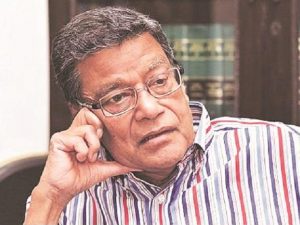
The central government has extended the term of K.K. Venugopal as Attorney General (AG) for one more year.
- This is the second time the Centre has extended his tenure. Venugopal received his first extension of term in 2020.
- Venugopal was appointed the 15th AG of India in 2017. He succeeded Mukul Rohatgi who was AG from 2014-2017.
- He would be in command of the government’s legal defence in several sensitive cases pending in the Supreme Court, which includes the challenge to the abrogation of Article 370 of the Constitution and the Citizenship Amendment Act.
- The Attorney General (AG) of India is a part of the Union Executive. AG is the highest law officer in the country.
- Article 76 of the Constitution provides for the office of AG of India.
Appointment and Eligibility:
- AG is appointed by the President on the advice of the government.
- S/he must be a person who is qualified to be appointed a judge of the Supreme Court, i.e. s/he must be a citizen of India and must have been a judge of some high court for five years or an advocate of some high court for ten years or an eminent jurist, in the opinion of the President.
- Term of the Office: Not fixed by the Constitution.
- Removal: Procedures and grounds for the removal of AG are not stated in the Constitution. S/he holds office during the pleasure of the President (may be removed by the President at any time).
Duties and Functions:
- To give advice to the Government of India (GoI) upon such legal matters, which are referred to her/him by the President.
- To perform such other duties of a legal character that are assigned to her/him by the President.
- To appear on behalf of the GoI in all cases in the Supreme Court or in any case in any High Court in which the GoI is concerned.
- To represent the GoI in any reference made by the President to the Supreme Court under Article 143 (Power of the President to consult the Supreme Court) of the Constitution.
- To discharge the functions conferred on her/him by the Constitution or any other law.
National Statistics Day:
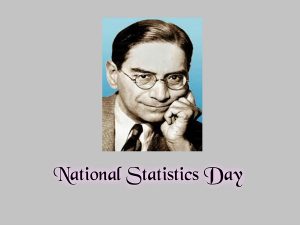
Every year, the Statistics Day is celebrated on 29th June, the birth anniversary of Prof. Prasanta Chandra Mahalanobis, to recognise his invaluable contribution in establishing the National Statistical System.
- Aim:
- To popularise the use of statistics in everyday life and sensitise the public as to how statistics help in shaping and framing policies.
- Theme for 2021:
- Sustainable Development Goal (SDG)- 2 (End Hunger, Achieve Food Security and Improved Nutrition and Promote Sustainable Agriculture).
- Winners of Prof. P.C. Mahalanobis National Award in Official Statistics, 2021 and Prof C. R. Rao National Award for Young Statistician, 2021 will be announced
- In 2019, the Ministry of Statistics and Programme Implementation instituted Prof. P C Mahalanobis National Award in official statistics for recognizing outstanding achievement of official statisticians in central government, state governments and institutions.
- The Ministry also recognises the outstanding contribution for high-quality research work in the field of applied and theoretical statistics benefitting the official statistical system through the Prof. C R Rao and Prof. P V Sukhatme awards, awarded in alternate years.




